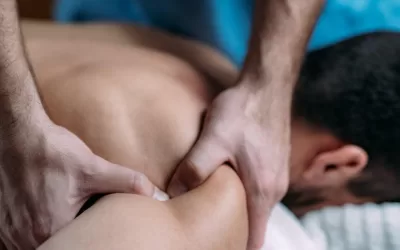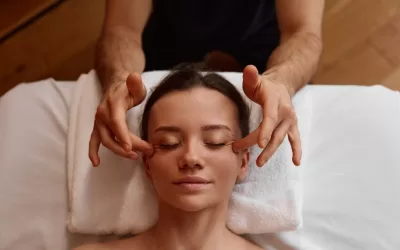Structural Integration is a form of bodywork that helps to release the restrictions in your body. It was developed by Dr. Ida P. Rolf, who believed that many health problems were due to strain patterns in the tissues and fascia. She thought that these strain patterns were caused by early childhood traumas or chronic stresses on the individual’s body, which led to adhesions forming between muscles, nerves, and other connective tissue cells. The goal of this article is to give you 8 fast facts about rolfing so you can make an informed decision if it might be right for you.
How Does Structural Integration Work?
It is similar to physical therapy in some ways, but more targeted at specific areas of the body. The idea behind it is that if your posture isn’t correct or you have injured yourself somehow, then there are muscles and parts of your skeleton which need to be put back into place so they can heal correctly. If muscle tension does not release after an injury heals, the area may become painful again later on because it was never treated properly during recovery. These misalignments between bones cause problems elsewhere too, for example, someone with a right leg slightly longer than their left will end up putting strain on other joints as well.
Structural Integration Facts You Should Know
Structural Integration is a type of bodywork that is typically helpful in treating chronic pain. It’s also sometimes used to treat injuries and other conditions, such as asthma or allergies. Here are eight fast facts you should know about Structural Integration:
1. It was developed by an American doctor named Ida P. Rolf in the 1930s.
She originally called it structural integration, but later changed the name to Structural Integration because she didn’t want people to think her method simply involved physical massage.
2. Structural Integration is meant to realign your bones and tissues, as well as release tension in muscles.
It can also help reduce stress by enhancing the nervous system’s ability to communicate with the rest of your body. Even better news, Structural Integration might be able to relieve certain types of pain that haven’t responded well to other treatment methods.
3. During each session, your practitioner will use his hands and fingers on specific points throughout your entire body.
The specific location of the pressure will depend on what you are being treated for. The practitioner may move your muscles and spine around to break up adhesions, relieve tension, or create movement.
4. The effects of Structural Integration are said to be long-lasting.
The tissue changes that occur during a session can last for about three months, and the results may continue for several more years after treatment has stopped.
5. It’s possible to be treated with Structural Integration while you’re clothed.
Some people like this because it means they can receive treatment without having to strip down and change into a gown or other type of clothing. However, as the treatment progresses your practitioner will take off layers until he reaches the area needing attention. It might cause some discomfort when deep pressure is applied in certain areas, but most patients find that any pain during their sessions goes away very quickly after treatment begins and isn’t at all bothersome by the end of each session, although there may be some soreness afterward.
6. Each session lasts about an hour.
Some people have multiple sessions, but it’s also possible to be treated with Structural Integration just once or twice during a single appointment if that’s all you need for your condition. A standard series of treatments usually involve at least ten sessions. However, certain conditions might require fewer visits than others depending on what they are and how quickly your practitioner can help them heal. It is important to note that some injuries benefit from repeated sessions over time; the number recommended by your doctor will depend on your specific situation.
7. Structural Integration isn’t just for adults.
When it comes to kids, the effects of this treatment can improve their posture and help them be more comfortable as they grow. Many parents find that after sessions with a practitioner, their children are better able to concentrate in school or play sports without getting tired so easily because they aren’t carrying around extra weight from misalignment issues. This type of bodywork is also effective at relieving pain due to scoliosis (curvature of the spine) when used on kids who have reached puberty, however, it doesn’t work well if your child has not yet developed secondary sexual characteristics.
8. Structural Integration may lead to some changes in the way you feel.
Some people like this because it can help them become more flexible or reduce their pain, while others do not appreciate any change at all. It’s important to discuss your feelings about these potential effects with your practitioner before treatment begins so he knows what kind of results you hope for and can work alongside you throughout each session if needed.
We hope you found this article interesting and informative. Structural Integration is a great way to take care of your body, relieve stress, ease pain in muscles and joints, improve posture, increase flexibility. If you’re interested in getting started with Structural Integration or want more information about what it’s like to get treatment, please contact us today for an appointment.
Are You an Athlete Experiencing Pain But Don’t Know Where to Turn for Help?
MedicinEvolution Bodywork Beyond Massage’s Beyond Ergonomics gives athletes and desk professionals solutions to their pain problems. Body imbalances, repetitive use, and lack of movement are the cause of many injuries and pain. Beyond Ergonomics helps you discover your imbalances and create change. MedicinEvolution’s purpose is to reduce pain and other symptoms that you haven’t had luck with. MedicinEvolution Bodywork Beyond Massage is the solution for many problems plaguing your body. Make your appointment today!





